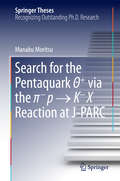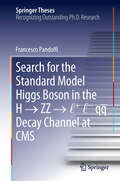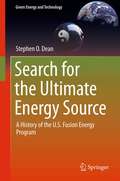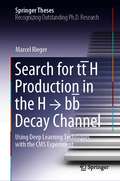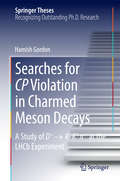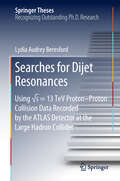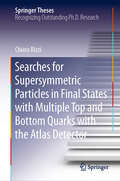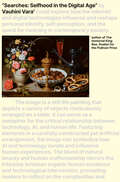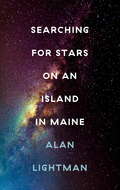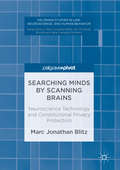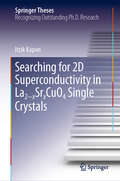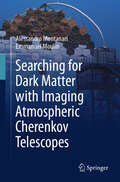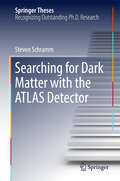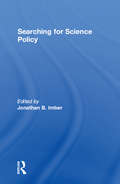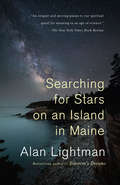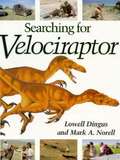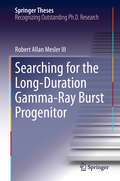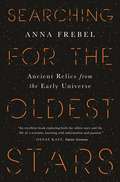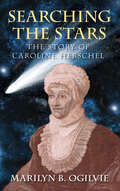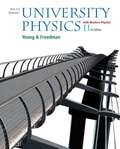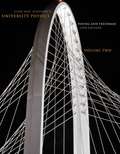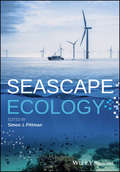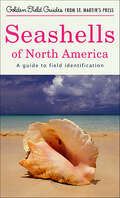- Table View
- List View
Search for the Pentaquark Θ+ via the π--p K--X Reaction at J-PARC
by Manabu MoritsuThistheses reports on an experimental search for an exotic hadron, &ThΗ+(1540)pentaquark, which is a genuine exotic hadron with a five-quark system of uuddsbar. Theresults of this book support that the existence of &ThΗ+ wasstrongly constrained. The &ThΗ+ pentaquark was searched for via the Π- p ⇒ K- Xreaction using a beam momentum of 2. 01 GeV/c at the J-PARC hadron experimentalfacility, taking advantage of high-statistics and high-resolution compared withprevious experiments, some of which claimed the evidence of &ThΗ+. Inorder to realize a good missing-mass resolution of 2 MeV, the beam spectrometerand superconducting kaon spectrometer were constructed. No clear peak was observed in the missing mass spectrum of the Π- p ⇒ K- Xreaction, and the upper limit of the production cross section was found to beless than 0. 28 Μb/sr at the 90% confidence level in a mass region of1500-1560 MeV/c2. This upper limit is an order of magnitude smallerthan that of the previous KEK experiment. Compared with a theoreticalcalculation using the effective Lagrangian approach, the decay width of &ThΗ+ wasevaluated. The upper limits on the decay width were estimated to be 0. 36 and1. 9 MeV for the &ThΗ+ spin-parity of 1/2+ and 1/2-,respectively. These are quite small for a width of ordinary hadron resonances,and the existence of &ThΗ+ was strongly constrained and isdoubtful.
Search for the Standard Model Higgs Boson in the H → ZZ → l + l - qq Decay Channel at CMS
by Francesco PandolfiThe theoretical foundations of the Standard Model of elementary particles relies on the existence of the Higgs boson, a particle which has been revealed for the first time by the experiments run at the Large Hadron Collider (LHC) in 2012. As the Higgs boson is an unstable particle, its search strategies were based on its decay products. In this thesis, Francesco Pandolfi conducted a search for the Higgs boson in the H ZZ l + l - qq Decay Channel with 4.6 fb -1 of 7 TeV proton-proton collision data collected by the Compact Muon Solenoid (CMS) experiment. The presence of jets in the final state poses a series of challenges to the experimenter: both from a technical point of view, as jets are complex objects and necessitate of ad-hoc reconstruction techniques, and from an analytical one, as backgrounds with jets are copious at hadron colliders, therefore analyses must obtain high degrees of background rejection in order to achieve competitive sensitivity. This is accomplished by following two directives: the use of an angular likelihood discriminant, capable of discriminating events likely to originate from the decay of a scalar boson from non-resonant backgrounds, and by using jet parton flavor tagging, selecting jets compatible with quark hadronization and discarding jets more likely to be initiated by gluons. The events passing the selection requirements in 4.6 fb -1 of datacollected by the CMS detector are examined, in the search of a possible signal compatible with the decay of a heavy Higgs boson. The thesis describes the statistical tools and the results of this analysis. This work is a paradigm for studies of the Higgs boson with final states with jets. The non-expert physicists will enjoy a complete and eminently readable description of a proton-proton collider analysis. At the same time, the expert reader will learn the details of the searches done with jets at CMS.
Search for the Ultimate Energy Source
by Stephen O. DeanWhy has the clean, limitless energy promised by fusion always seemed just out of reach? Search for the Ultimate Energy Source: A History of the U.S. Fusion Energy Program, explains the fundamentals and concepts behind fusion power, and traces the development of fusion historically by decade--covering its history as dictated by US government policies, its major successes, and its prognosis for the future. The reader will gain an understanding of how the development of fusion has been shaped by changing government priorities as well as other hurdles currently facing realization of fusion power. Advance Praise for Search for the Ultimate Energy Source: "Dr. Dean has been uniquely involved in world fusion research for decades and, in this book, describes the complicated realities like few others possibly could." -Robert L. Hirsch, a former director of the US fusion program, an Assistant Administrator of the US Energy Research and Development Administration (ERDA); an executive at Exxon, Arco, and the Electric Power Research Institute (EPRI); and lead author of the book The Impending World Energy Mess (Apogee Prime Books, 2009). "In this book, Dr. Dean provides the many reasons why fusion has progressed more slowly than many had hoped. Budget is usually cited as the culprit, but policy is equally to blame. Facilities have been closed down before their jobs were done--or in some cases, even started. It seems this situation has become endemic in fusion, and if one thinks about it, in other nationally important Science and Technology initiatives as well." -William R. Ellis, a former scientist at Los Alamos National Laboratory, Associate Director of Research at the US Naval Research Laboratory, a vice president at Ebasco Services and at Raytheon, and chair of the US ITER Industry Council and the US ITER Industrial Consortium.
Search for tt̄H Production in the H → bb̅ Decay Channel: Using Deep Learning Techniques with the CMS Experiment (Springer Theses)
by Marcel RiegerIn 1964, a mechanism explaining the origin of particle masses was proposed by Robert Brout, François Englert, and Peter W. Higgs. 48 years later, in 2012, the so-called Higgs boson was discovered in proton-proton collisions recorded by experiments at the LHC. Since then, its ability to interact with quarks remained experimentally unconfirmed. This book presents a search for Higgs bosons produced in association with top quarks tt̄H in data recorded with the CMS detector in 2016. It focuses on Higgs boson decays into bottom quarks H → bb̅ and top quark pair decays involving at least one lepton. In this analysis, a multiclass classification approach using deep learning techniques was applied for the first time. In light of the dominant background contribution from tt̄ production, the developed method proved to achieve superior sensitivity with respect to existing techniques. In combination with searches in different decay channels, the presented work contributed to the first observations of tt̄H production and H → bb̅ decays.
Searches for CP Violation in Charmed Meson Decays
by Hamish GordonOur current understanding of the fundamental building blocks of the Universe, summarised by the Standard Model of particle physics, is incomplete. For example, it fails to explain why we do not see equal, or almost equal, numbers of particles and their antiparticle partners. To explain this asymmetry requires, among other effects, a mechanism known as charge-parity (CP) violation that causes differences between the rates at which particles and antiparticles decay. CP violation is seen in systems containing bottom and strange quarks, but not in those with up, charm or top quarks. This thesis describes searches for particle-antiparticle asymmetries in the decay rates of charmed mesons. No evidence of CP violation is found. With current sensitivities, an asymmetry large enough to observe probably could not be explained by the Standard Model. Instead an explanation could come from new physics, for example contributions from supersymmetric or other undiscovered heavy particles. In the thesis, the development of new techniques to search for these asymmetries is described. They are applied to data from the LHCb experiment at CERN to make precise measurements of asymmetries in the D^+->K^-K^+pi^+ decay channel. This is the most promising charged D decay for CP violation searches.
Searches for Dijet Resonances: Using ?s = 13 Tev Proton- Proton Collision Data Recorded By The Atlas Detector At The Large Hadron Collider (Springer Theses)
by Lydia Audrey BeresfordThis book addresses one of the most intriguing mysteries of our universe: the nature of dark matter. The results presented here mark a significant and substantial contribution to the search for new physics, in particular for new particles that couple to dark matter. The first analysis presented is a search for heavy new particles that decay into pairs of hadronic jets (dijets). This pioneering analysis explores unprecedented dijet invariant masses, reaching nearly 7 TeV, and sets constraints on several important new physics models. The two subsequent analyses focus on the difficult low dijet mass region, down to 200 GeV, and employ a novel technique to efficiently gather low-mass dijet events. The results of these analyses transcend the long-standing constraints on dark matter mediator particles set by several existing experiments.
Searches for Supersymmetric Particles in Final States with Multiple Top and Bottom Quarks with the Atlas Detector (Springer Theses)
by Chiara RizziThis PhD thesis documents two of the highest-profile searches for supersymmetry performed at the ATLAS experiment using up to 80/fb of proton-proton collision data at a center-of-mass energy of 13 TeV delivered by the Large Hadron Collider (LHC) during its Run 2 (2015-2018). The signals of interest feature a high multiplicity of jets originating from the hadronisation of b-quarks and large missing transverse momentum, which constitutes one of the most promising final state signatures for discovery of new phenomena at the LHC. The first search is focused on the strong production of a pair of gluinos, with each gluino decaying into a neutralino and a top-antitop-quark pair or a bottom-antibottom-quark pair. The second search targets the pair production of higgsinos, with each higgsino decaying into a gravitino and a Higgs boson, which in turn is required to decay into a bottom-antibottom-quark pair. Both searches employ state-of-the-art experimental techniques and analysis strategies at the LHC, resulting in some of the most restrictive bounds available to date on the masses of the gluino,neutralino, and higgsino in the context of the models explored.
Searches for the Supersymmetric Partner of the Top Quark, Dark Matter and Dark Energy at the ATLAS Experiment (Springer Theses)
by Nicolas Maximilian KöhlerAstrophysical observations implying the existence of Dark Matter and Dark Energy, which are not described by the Standard Model (SM) of particle physics, have led to extensions of the SM predicting new particles that could be directly produced at the Large Hadron Collider (LHC) at CERN. Based on 2015 and 2016 ATLAS proton-proton collision data, this thesis presents searches for the supersymmetric partner of the top quark, for Dark Matter, and for DarkEnergy, in signatures with jets and missing transverse energy.Muon detection is key to some of the most important LHC physics results, including the discovery of the Higgs boson and the measurement of its properties. The efficiency with which muons can be detected with the ATLAS detector is measured using Z boson decays. The performance of high-precision Monitored Drift Tube muon chambers under background rates similar to the ones expected for the High Luminosity-LHC is studied.
Searches: Selfhood in the Digital Age
by Vauhini VaraFrom the author of The Immortal King Rao, finalist for the Pulitzer Prize, a personal exploration of how technology companies have both fulfilled and exploited the human desire for understanding and connectionA MOST ANTICIPATED BOOK: The New York Times, Esquire, Harper&’s Bazaar, Foreign Policy, Bustle, Alta, Ms. Magazine, Cultured, Denizen, Lit Hub, Book Riot, and Electric LiteratureWhen it was released to the public in November 2022, ChatGPT awakened the world to a secretive project: teaching AI-powered machines to write. Its creators had a sweeping ambition—to build machines that could not only communicate, but could do all kinds of other activities, better than humans ever could. But was this goal actually achievable? And if reached, would it lead to our liberation or our subjugation? Vauhini Vara, an award-winning tech journalist and editor, had long been grappling with these questions. In 2021, she asked a predecessor of ChatGPT to write about her sister&’s death, resulting in an essay that was both more moving and more disturbing than she could have imagined. It quickly went viral.The experience, revealing both the power and the danger of corporate-owned technologies, forced Vara to interrogate how these technologies have influenced her understanding of her self and the world around her, from discovering online chat rooms as a preteen, to using social media as the Wall Street Journal&’s first Facebook reporter, to asking ChatGPT for writing advice—while compelling her to add to the trove of human-created material exploited for corporations&’ financial gain. Interspersed throughout this investigation are her own Google searches, Amazon reviews, and the other raw material of internet life—including the viral AI experiment that started it all. Searches illuminates how technological capitalism is both shaping and exploiting human existence, while proposing that by harnessing the collective creativity that makes humans unique, we might imagine a freer, more empowered relationship with our machines and, ultimately, with one another.
Searching For Stars on an Island in Maine
by Alan LightmanAs a physicist, Alan Lightman has always held a purely scientific view of the world. Even as a teenager, experimenting in his own laboratory, he was impressed by the logic and materiality of the universe, which is governed by a small number of disembodied forces and laws. Those laws decree that all things in the world are material and impermanent. But one summer evening, while looking at the stars from a small boat at sea, Lightman was overcome by the overwhelming sensation that he was merging with something larger than himself - a grand and eternal unity, a hint of something absolute and immaterial.Searching for Stars on an Island in Maine is the result of these seemingly contradictory impulses, written as an extended meditation on an island in Maine, where Lightman and his wife spend their summers. Framing the dialogue between religion and science as a contrast between absolutes and relatives, Lightman explores our human quest for truth and meaning and the different methods of religion and science in that quest. Along the way, he draws from sources ranging from St. Augustine's conception of absolute truth to Einstein's relativity, from a belief in the divine and eternal nature of stars to their discovered materiality and mortality, from the unity of the once indivisible atom to the multiplicity of subatomic particles and the recent notion of multiple universes. What emerges is not only an understanding of the encounter between science and religion but also a profound exploration of the complexity of human existence.
Searching Minds by Scanning Brains
by Marc Jonathan BlitzThis book examines the ethical and legal challenges presented by modern techniques of memory retrieval, especially within the context of potential use by the US government in courts of law. Specifically, Marc Blitz discusses the Fourth Amendment's protections against unreasonable searches and the Fifth Amendment's self-incrimination clause. He also argues that we should pay close attention to another constitutional provision that individuals generally don't think of as protecting their privacy: The First Amendment's freedom of speech. First Amendment values also protect our freedom of thought, and this--not simply our privacy--is what is at stake if government engaged in excessive monitoring of our minds.
Searching for 2D Superconductivity in La2−xSrxCuO4 Single Crystals (Springer Theses)
by Itzik KaponA new experimental method – the "Stiffnessometer", is developed to measure elementary properties of a superconductor, including the superconducting stiffness and the critical current. This technique has many advantages over existing methods, such as: the ability to measure these properties while minimally disturbing the system; the ability to measure large penetration depths (comparable to sample size), as necessary when approaching the critical temperature; and the ability to measure critical currents without attaching contacts and heating the sample. The power of this method is demonstrated in a study of the penetration depth of LSCO, where striking evidence is found for two separate critical temperatures for the in-plane and out-of-plane directions. The results in the thesis are novel, important and currently have no theoretical explanation. The stiffnessometer in a tool with great potential to explore new grounds in condensed matter physics.
Searching for Dark Matter with Imaging Atmospheric Cherenkov Telescopes
by Alessandro Montanari Emmanuel MoulinThis book provides a comprehensive review of the methodologies and searches for dark matter (DM) annihilation signals using very-high-energy gamma rays (VHE, E > 100 GeV), utilizing data from current Imaging Atmospheric Cherenkov Telescopes (IACTs) in the pre-Cherenkov Telescope Array (CTA) era. It presents the state-of-the-art statistical analysis methods and theoretical models related to TeV DM, applied to data from the H.E.S.S. telescope array, which is currently the most sensitive IACT array for observing the Galactic Center (GC), where the brightest DM annihilation signals are expected. The authors delve into the astrophysics of VHE gamma-ray production through cosmic ray acceleration. They explain the Imaging Atmospheric Cherenkov technique, describe the H.E.S.S. array, and discuss possibilities for DM annihilation-induced gamma-ray spectra and DM distribution profiles. By employing advanced statistical methods, they search for weak signals in the GC region using the H.E.S.S. Inner Galaxy Survey dataset and address systematic uncertainties. The authors present and debate the most constraining results on TeV dark matter models. Finally, this book presents the sensitivity of current IACTs to DM annihilation signals using IGS mock datasets, accounting for systematic and instrumental uncertainties. Detection prospects for canonical TeV DM models, such as the Wino, Higgsino, and quintuplet, are discussed. Sensitivity benchmarks on indirect DM searches with IACTs using H.E.S.S. as an example are provided, setting the stage for future developments in the CTA era. It serves as a consolidated resource for graduate students and researchers, presenting methodologies that could lead to significant advancements in the quest to understand dark matter.
Searching for Dark Matter with the ATLAS Detector
by Steven SchrammThis thesis describes the search for Dark Matter at the LHC in the mono-jet plus missing transverse momentum final state, using the full dataset recorded in 2012 by the ATLAS Experiment. It is the first time that the number of jets is not explicitly restricted to one or two, thus increasing the sensitivity to new signals. Instead, a balance between the most energetic jet and the missing transverse momentum is required, thus selecting mono-jet-like final states. Collider searches for Dark Matter have typically used signal models employing effective field theories (EFTs), even when comparing to results from direct and indirect detection experiments, where the difference in energy scale renders many such comparisons invalid. The thesis features the first robust and comprehensive treatment of the validity of EFTs in collider searches, and provides a means by which the different classifications of Dark Matter experiments can be compared on a sound and fair basis.
Searching for Science Policy
by Jonathan B. ImberThe findings of scientific research often provide an important baseline to the formation of public policy. However, effective communication to the larger public about what scientists do and know is a problem inherent to all democratic societies. It is the prerogative of democratic societies to determine what kind of scientific research will be funded. Searching for Science Policy offers innovative ways of thinking about how the rhetoric and practice of science operates in various institutional contexts.The book is divided into two parts. Part 1, "Policy Uses and Misuses of Science," explores the various ways in which scientific claims are inevitably mediated by how they are used. Joel Best, draws on statistics involving missing children, violence against women, and attendance figures at political demonstrations to demonstrate how the motivations to use inaccurate and misleading numbers stems directly from the ideological and organizational interests of those using them. Judith Kleinfeld analyzes recruitment policies for women scientists at MIT, showing how hiring practices that may be justifiable on extra-scientific factors are carried out based on pseudo-scientific studies not subject to public scrutiny. Robert MacCoun addresses the journalistic misuse of drug and drug abuse statistics and shows how this profoundly distorts policy implications drawn from them. And Allan Mazur examines the role scientific evidence has come to play in the law, pointing out the pitfalls of its intrinsic quality and how such evidence may be interpreted or misinterpreted by judges and juries.Part 2, "Searching for Science Policy," extends discussion of the role of science to specific ideas about how public policy-making might be improved in matters of law, family, environment, drug use, and health. Mark Kleiman weighs the sometimes conflicting claims of science and social order in formulating drug policy. Norval Glenn calls for closer cooperation between professional associations, the media, and researchers in reporting provisional social science findings to the public. Stanley Rothman and S. Robert Lichter examine the dynamic by which environmental organizations shape public perceptions of risk and harm. And in the concluding chapter, Sheila Jasanoff looks closely at differences between the provisional nature of science as normally practiced and the more contentious sphere of litigation that demands ultimate resolution.In a time when scientists find themselves subject to more public scrutiny than ever before, the well-informed citizen is no longer a moral ideal but rather a social imperative. Searching for Science Policy helps to clarify the grounds and the circumstances of more effective use of science in public discourse.
Searching for Stars on an Island in Maine
by Alan LightmanFrom the acclaimed author of Einstein's Dreams, here is an inspires, lyrical meditation on religion and science that explores the tension between our yearning for permanence and certainty, and the modern scientific discoveries that demonstrate the impermanent and uncertain nature of the world. <P><P>As a physicist, Alan Lightman has always held a scientific view of the world. As a teenager experimenting in his own laboratory, he was impressed by the logic and materiality of a universe governed by a small number of disembodied forces and laws that decree all things in the world are material and impermanent. <P><P>But one summer evening, while looking at the stars from a small boat at sea, Lightman was overcome by the overwhelming sensation that he was merging with something larger than himself—a grand and eternal unity, a hint of something absolute and immaterial. <P><P> Searching for Stars on an Island in Maine is Lightman's exploration of these seemingly contradictory impulses. He draws on sources ranging from Saint Augustine's conception of absolute truth to Einstein's theory of relativity, from the unity of the once-indivisible atom to the multiplicity of subatomic particles and the recent notion of multiple universes. <P><P>What he gives us is a profound inquiry into the human desire for truth and meaning, and a journey along the different paths of religion and science that become part of that quest.
Searching for Velociraptor
by Lowell Dingus Mark A. NorellAn account of the search for, recovery, preservation, and study of the fossilized remains of the dinosaur Velociraptor as narrated by 2 paleontologists who led the expedition to Mongolia.
Searching for the Long-Duration Gamma-Ray Burst Progenitor
by Robert Allan Mesler IIINominated as an outstanding thesis by the Department of Physics and Astronomy of the University of New Mexico, this thesis seeks to identify the gamma-ray burst (GRB) progenitor. GRBs are extragalactic explosions that briefly outshine entire galaxies, but the mechanism that can release that much energy over a In this book, the author uses the Zeus-MP astrophysical hydrodynamics code to model the environment around a stellar progenitor prior to the burst. He then develops a new semi-analytic MHD and emission model to produce light curves for GRBs encountering these realistic density profiles. The work ultimately shows that the circumburst medium surrounding a GRB at the time of the explosion is much more complex than a pure wind, and that observed afterglows are entirely consistent with a large subset of proposed stellar progenitors.
Searching for the Oldest Stars: Ancient Relics from the Early Universe
by Anna FrebelAstronomers study the oldest observable stars in the universe in much the same way that archaeologists study ancient artifacts on Earth. Here, Anna Frebel--who is credited with discovering several of the oldest and most primitive stars using the world's largest telescopes--takes readers into the far-flung depths of space and time to provide a gripping firsthand account of the cutting-edge science of stellar archaeology.Weaving the latest findings in astronomy with her own compelling insights as one of the world's leading researchers in the field, Frebel explains how sections of the night sky are "excavated" in the hunt for these extremely rare relic stars--some of which have been shining for more than 13 billion years--and how this astonishing quest is revealing tantalizing new details about the earliest times in the universe. She vividly describes how the very first stars formed soon after the big bang and then exploded as supernovae, leaving behind chemical fingerprints that were incorporated into the ancient stars we can still observe today. She shows how these fingerprints provide clues to the cosmic origin of the elements, early star and galaxy formation, and the assembly process of the Milky Way. Along the way, Frebel recounts her own stories of discovery, offering an insider's perspective on this exciting frontier of science.Lively and accessible, this book sheds vital new light on the origins and evolution of the cosmos while providing a unique look into life as an astronomer.
Searching the Stars: The Story of Caroline Herschel
by Marilyn B OgilvieCaroline Herschel is best known as the less significant sister of the astronomer William Herschel. Yet the romantic notion of her tirelessly working for her brother while he made his studies of the heavens, documenting his discoveries so he could achieve greatness in the scientific world, couldn't be further from the truth. When Caroline wasn't working as her brother's assistant, she was sweeping the stars with her own small telescope given to her by William. Not only did she unearth three important nebulae, but she discovered no fewer than eight comets in her own right. When William became Astronomer Royal to King George III in 1782, Caroline too received an annual salary, making her the first ever woman to work as a professional scientist. William was made a fellow of the Royal Society in 1781 after discovering the planet Uranus. It wasn't until 1828, but the Society would eventually reward Caroline too, with its Gold Medal. This award would not be awarded to another woman until 1996. Searching the Stars reveals the hardships experienced by a woman pursuing a male profession. Yet how did this unattractive, diminutive woman gain the respect of her professional colleagues, her country and even her king? As Marilyn B. Ogilive investigates this extraordinary life, the determination, humility and passion of one unremarkable woman come to light.
Sears and Zemansky's University Physics: with Modern Physics, 11th Edition
by Roger A. Freedman A. Lewis Ford Hugh D. YoungThis book is the product of more than half a century of innovation in physics education. When the first edition of University Physics by Francis W. Sears and Mark W. Zemansky appeared in 1949, it was revolutionary among calculus-based physics textbooks in its emphasis on the fundamental principles of physics and how to apply them. The success of University Physics with generations of students and educators throughout the world is a testament to the merits of this approach. In preparing this new Eleventh Edition, we have further enhanced and developed University Physics to emphasize two key objectives: helping students develop conceptual understanding, and helping them build strong problem- solving skills.
Sears and Zemansky's: University Physics, Volume 2
by Roger A. Freedman A. Lewis Ford Hugh D. YoungUniversity Physics Volume 2 (Chapers 21-37), 13/e continues to set the benchmark for clarity and rigor combined with effective teaching and research-based innovation. University Physics is known for its uniquely broad, deep, and thoughtful set of worked examples-key tools for developing both physical understanding and problem-solving skills. The Thirteenth Edition revises all the Examples and Problem-Solving Strategies to be more concise and direct while maintaining the Twelfth Edition's consistent, structured approach and strong focus on modeling as well as math. To help students tackle challenging as well as routine problems, the Thirteenth Edition adds Bridging Problems to each chapter, which pose a difficult, multiconcept problem and provide a skeleton solution guide in the form of questions and hints. The text's rich problem sets-developed and refined over six decades-are upgraded to include larger numbers of problems that are biomedically oriented or require calculus. The problem-set revision is driven by detailed student-performance data gathered nationally through MasteringPhysics®, making it possible to fine-tune the reliability, effectiveness, and difficulty of individual problems.
Seascape Ecology
by Simon J. PittmanSeascape Ecology provides a comprehensive look at the state-of-the-science in the application of landscape ecology to the seas and provides guidance for future research priorities. The first book devoted exclusively to this rapidly emerging and increasingly important discipline, it is comprised of contributions from researchers at the forefront of seascape ecology working around the world. It presents the principles, concepts, methodology, and techniques informing seascape ecology and reports on the latest developments in the application of the approach to marine ecology and management. A growing number of marine scientists, geographers, and marine managers are asking questions about the marine environment that are best addressed with a landscape ecology perspective. Seascape Ecology represents the first serious effort to fill the gap in the literature on the subject. Key topics and features of interest include: The origins and history of seascape ecology and various approaches to spatial patterning in the sea The links between seascape patterns and ecological processes, with special attention paid to the roles played by seagrasses and salt marshes and animal movements through seascapes Human influences on seascape ecology—includes models for assessing human-seascape interactions A special epilogue in which three eminent scientists who have been instrumental in shaping the course of landscape ecology offer their insights and perspectives Seascape Ecology is a must-read for researchers and professionals in an array of disciplines, including marine biology, environmental science, geosciences, marine and coastal management, and environmental protection. It is also an excellent supplementary text for university courses in those fields.
Seashells in My Pocket: A Child's Nature Guide Exploring the Atlantic Coast (2nd Edition)
by Judith HansenFrom the book Jacket: There is always something new for children to learn when they visit the seashore, and Seashells in My Pocket helps them to explore. Packed with scores of fascinating facts and new illustrations, this completely revised and expanded edition of Seashells in My Pocket tells kids all about nature along the Atlantic coast. The new Seashells in My Pocket includes: Sections on common shells, shore birds, sea creatures, seashore plants, and a new section on insects. A greatly expanded territory, now covering nature from Maine all the way to Florida. Dozens of species added. Locator maps showing where each species may be found. A convenient, carry-along size and sturdy, waterproof cover for long-lasting use. Perfect for taking to the beach. Tips on safety and protecting the shoreline environment.
Seashells of North America: A Guide to Field Identification (Golden Guides from St. Martin's Press)
by R. Tucker AbbottThis eBook is best viewed on a color device.Scoop up plentiful Cockles on Eastern beaches. Spy a fabulous Emperor Helmet in Southern Florida. Find a Red Chiton on the Pacific shore. The coasts of North America yield a wondrous variety of shells, from the majestic Conch to tiny Bittium. This beautifully illustrated guide, Seashells of North America by R. Tucker Abbott, helps both the novice and experienced shell hunter distinguish between similar varieties and find the glorious specimens that become a collection's prize.-Native varieties and important introduced species-Expert tips on cleaning and preservation-Common and scientific names-Convenient measuring rules...and more!!
